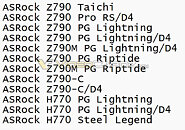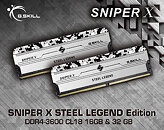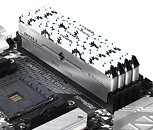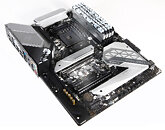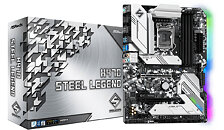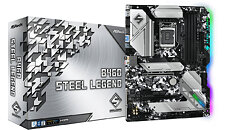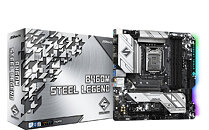
ASRock Presents Radeon RX 7600 XT Steel Legend & Challenger Models
ASRock, the leading global motherboard, graphics card and mini PC manufacturer, today launched the new Steel Legend and Challenger Series graphics cards based on the new AMD Radeon RX 7600 XT GPUs. The new ASRock AMD Radeon RX 7600 XT Steel Legend and Challenger Series graphics cards are built on the advanced AMD RDNA 3 architecture, featuring up to 32 redesigned compute units and second-generation AMD Infinity Cache technology. They also offer the latest features and capabilities including AMD Radiance Display Engine, full AV1 encoding and more to power high-performance 1080p gaming, streaming and content creation applications. Meanwhile, with support for AMD HYPR-RX with AMD Fluid Motion Frames users can crank up their game settings for fully immersive and highly responsive gaming.
The new ASRock AMD Radeon RX 7600 XT Steel Legend and Challenger Series graphics cards are equipped with high-speed 16 GB GDDR6 memory at 18 Gbps and are pre-overclocked to deliver higher levels of performance. The AMD Radiance Display Engine provides 12-bit-per-channel color for up to 68 billion colors for incredible color accuracy. In addition, ASRock AMD Radeon RX 7600 XT Steel Legend and Challenger Series graphics cards also support various ASRock exclusive features such as the Striped Axial Fan, the Ultra-fit Heatpipe, a stylish metal backplate, and Polychrome SYNC technology to provide excellent cooling efficiency, solid construction, and fancy ARGB lighting effects. Powered with these exclusive features, ASRock AMD Radeon RX 7600 XT Steel Legend and Challenger Series graphics cards are ideal choices for 1080p gamers and content creators.
The new ASRock AMD Radeon RX 7600 XT Steel Legend and Challenger Series graphics cards are equipped with high-speed 16 GB GDDR6 memory at 18 Gbps and are pre-overclocked to deliver higher levels of performance. The AMD Radiance Display Engine provides 12-bit-per-channel color for up to 68 billion colors for incredible color accuracy. In addition, ASRock AMD Radeon RX 7600 XT Steel Legend and Challenger Series graphics cards also support various ASRock exclusive features such as the Striped Axial Fan, the Ultra-fit Heatpipe, a stylish metal backplate, and Polychrome SYNC technology to provide excellent cooling efficiency, solid construction, and fancy ARGB lighting effects. Powered with these exclusive features, ASRock AMD Radeon RX 7600 XT Steel Legend and Challenger Series graphics cards are ideal choices for 1080p gamers and content creators.


















































